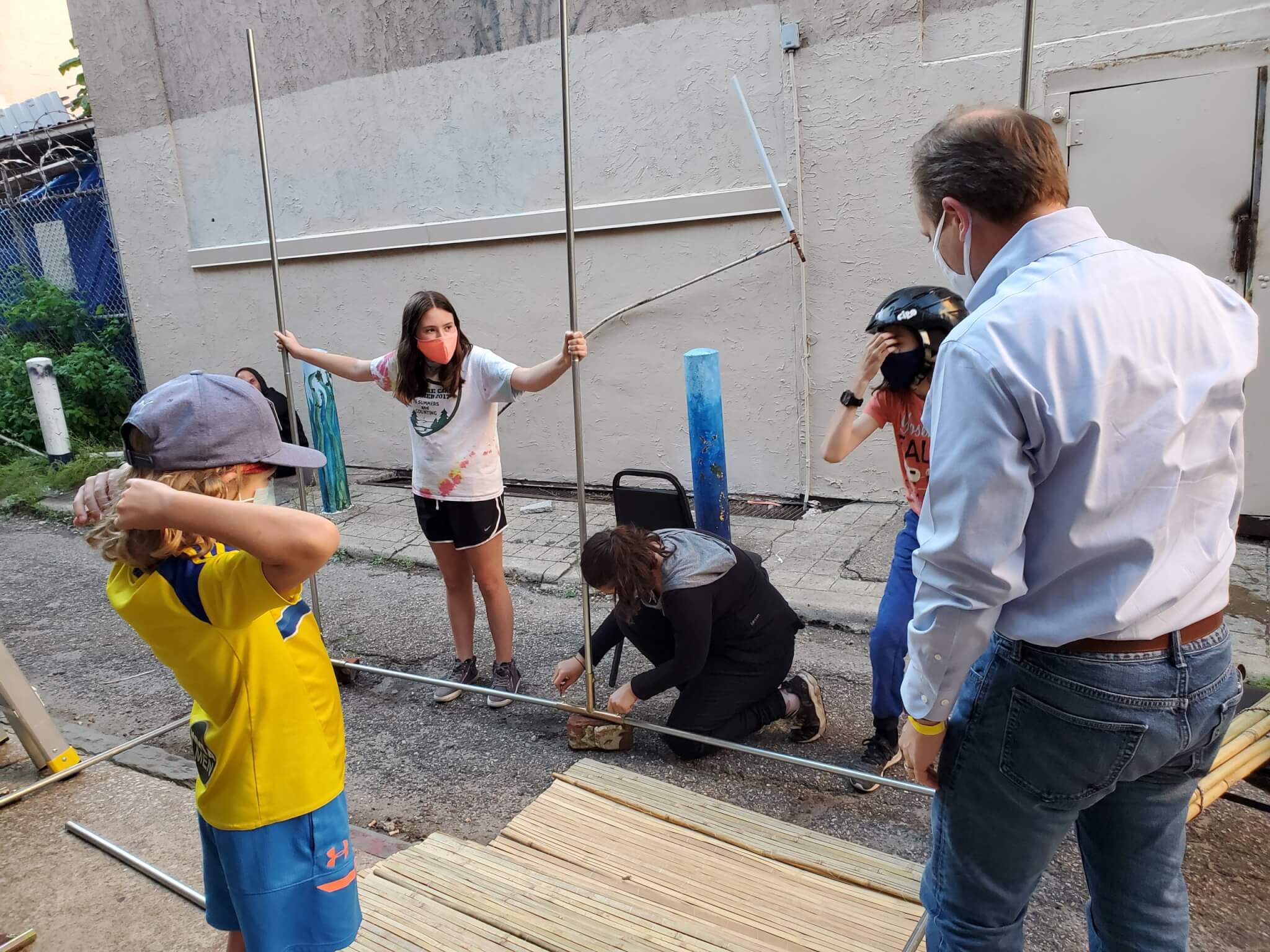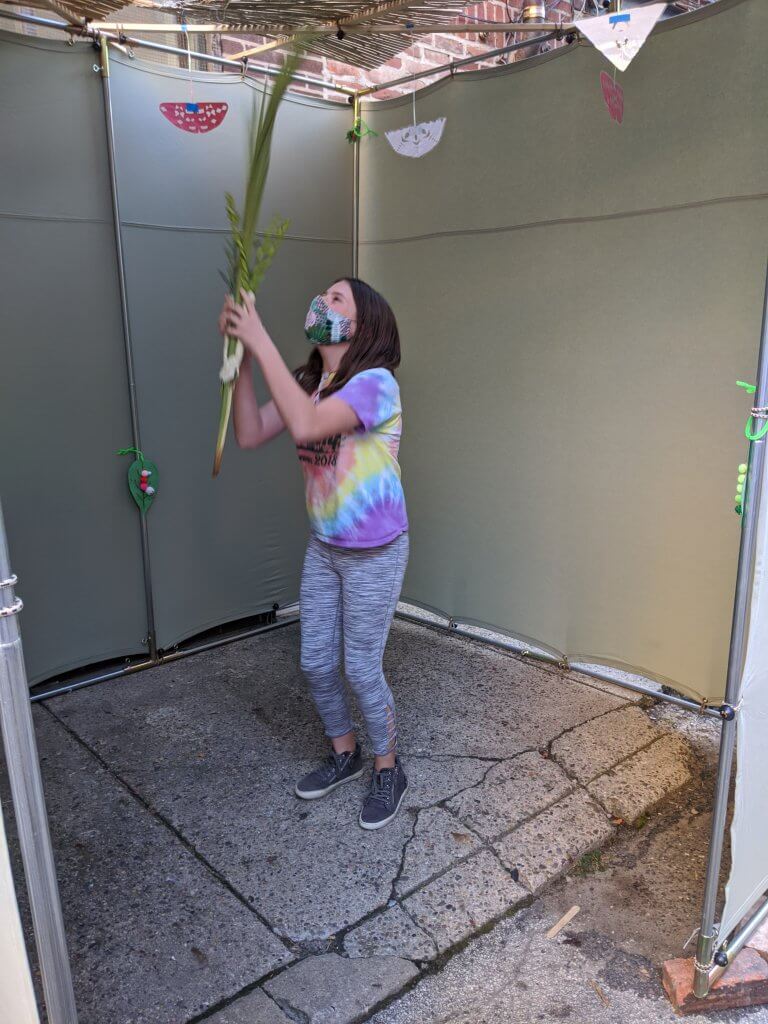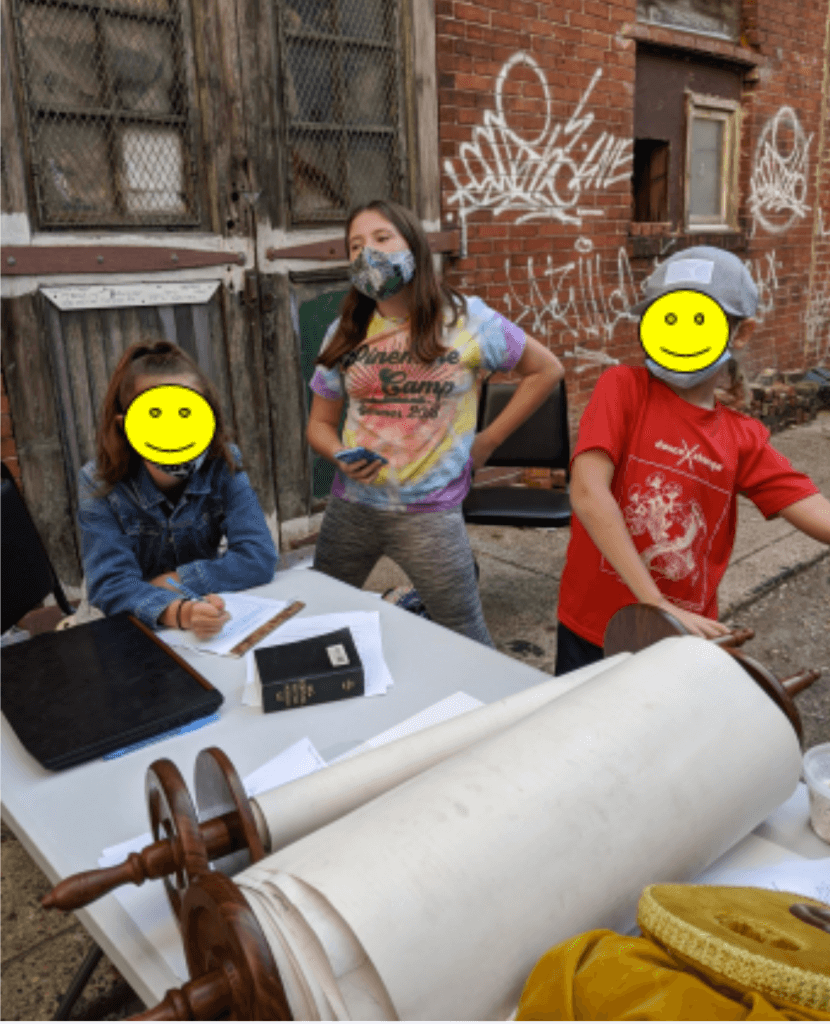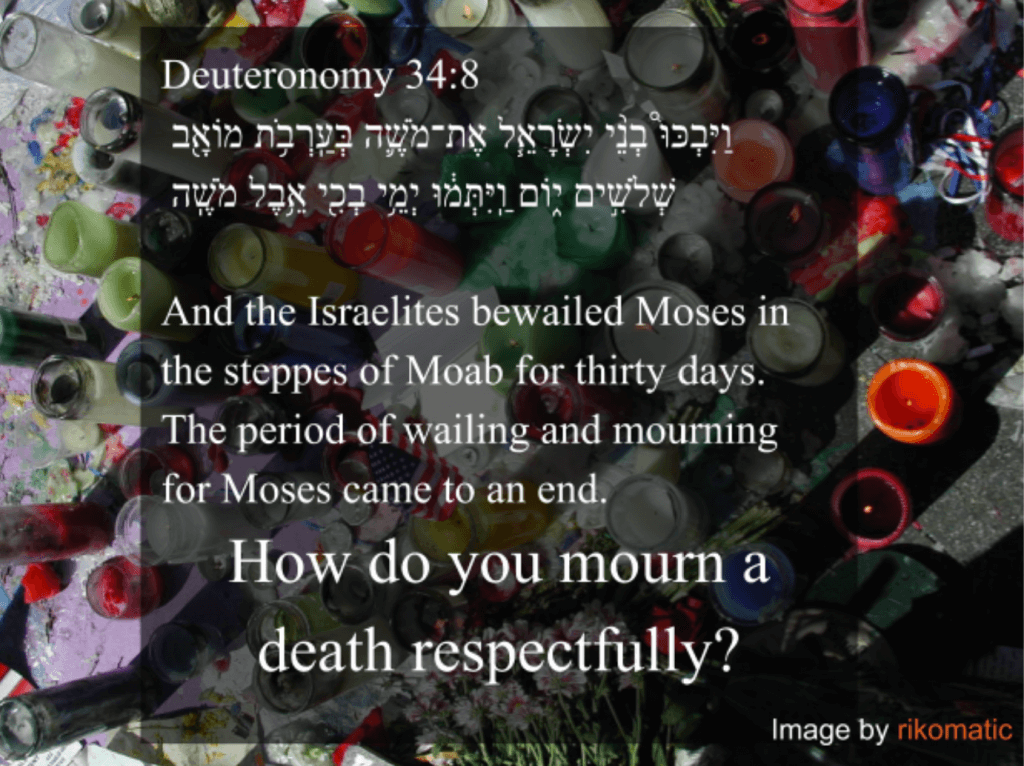
“It takes a village!”
This was the refrain the day BMitzvah headed to Makom Community to build our sukkah.
“There’s a catch,” I told them. “There are no instructions.”
Nathan and Leo were thrilled! Nathan reminded me that he’s been building from Legos without instructions for years and Leo said that building without instructions is his favorite way to build things.
We took stock of our materials and got to work. Quickly, we started finding language to describe the different pieces of our sukkah kit; “can I get a Big-Big and a Big-Small in this corner?” and found roles for ourselves; “Miryam will head up the ladder to secure those poles together; Remi & Zoey will screw them in place.”
Once we started to build vertically, we had to negotiate the safety of our tall, free-standing poles. We went through some safety tips; which made me feel confident in the cohort’s ability to build safely. This is important, as we’ll be building an ark for our Torah soon!
Beverly and I have always said that one goal of the BMitzvah program is for the kids to be able to master many different aspects of becoming a Jewish adult. Building a sukkah is one that is often overlooked but teaches a lot of teamwork and gives a great feeling of accomplishment. We were able to shake the lulav in a sukkah that we built together!

Celebrating the chaggim together is more than experiential learning, it is a part of the experience of being Jewish. We’ve been talking about building our Makom Community ark for about a month now. This project became real in a new way when we met our Torah this week, as part of our preparations for Simchat Torah. We rolled the Torah all the way to the last parashah, V’zot haBrachah, which we are reading this week! As we rolled the Torah scroll, the cohort noticed a lot about the writing:
- There are no vowels!
- There’s little crown things on the shin/sin.
- Why are some of those letters really big?
- What are the spaces in between some of the words?
We talked about how a sofer (scribe) has to be very careful creating a Torah scroll; any mistake means that section of the scroll must be completely rewritten.
“What’s the last word in the Torah?” Leo asked. I pointed to it and asked him to read.
“Yisrael!”

I reminded the cohort that the first word of the Torah is B’reisheet. Which means the last and first letters of the Torah spell lev (heart). It’s a bit of a corny teaching, and I got some classic pre-teen eyerolls, but I know that the cohort puts a lot of heart into their study of Torah. Our study of V’zot haBrachah led to some heartfelt social justice thoughts. Nathan, Zoey, Ronia, and Zahdi looked at different sections of Moses’ blessings to the different tribes. Nathan noticed the root word for “Ashrei” is his verse and we added it to our growing language log!

Ronia and Zahdi were disturbed by the treatment of the Israelites’ enemies in Moses’ blessing. The curse of being without children reminded Ronia of the forced hysterectomies happening in ICE detention camps. We discussed how scary that piece of news is and got a bit uncomfortable thinking about why that would be in Moses’ blessing. Leo and Remi looked at the verse detailing the Israelites “bewailing” Moses for thirty days. They wondered, how do we make sure everyone is properly mourned, not just those who were well-known or famous?

Keep an eye out on our Facebook and Instagram accounts for social justice posts about V’zot haBrachah by the cohort. We’re continuing to build the skills and the physical Judaica to be able to lead a meaningful Torah service soon! I can’t wait to see how these social justice leaders and compassionate kids develop their understanding of Torah to help share it with our whole community!
